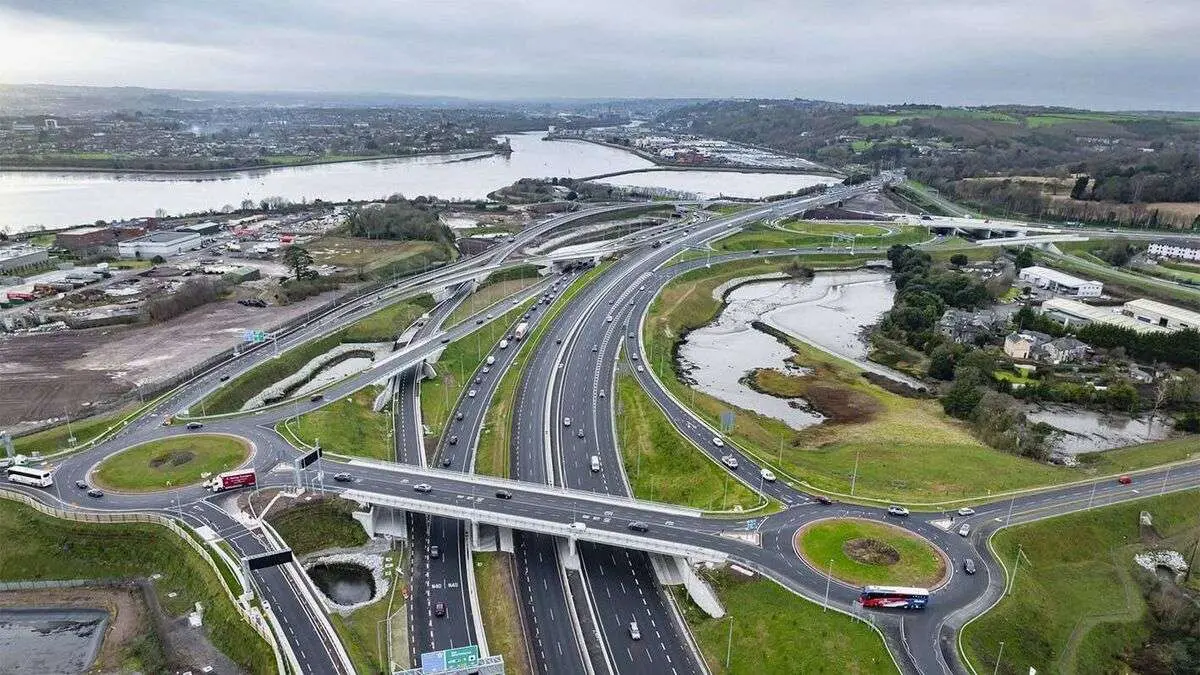
Retrofit Case Study – Guinness Enterprise Centre
Reddy A+U are working with many clients on the renovation and decarbonisation of their existing building stock. Our clients range from the HSE, Universities, the Land Development Agency and private developers.
As demand has increased, Reddy A+U’s expertise in retrofitting and decarbonisation has grown exponentially, enabling the firm to upgrade existing buildings to the standards required to reduce carbon emissions and meet the United Nations Sustainable Development Goals.
Strategy
The first of our retrofit case studies was the refurbishment and extension of the Guinness Enterprise Centre, an innovation and start up hub in Dublin 8. The challenge set was to propose interventions which could upgrade the building to a level of 65 kWh/m2.yr whilst also being able to provide a business case to support this. The warehouse building was 3,000 m2 in area over three storeys and partly reconstructed in the 1990’s using a steel frame and traditional masonry construction.

Retrofit and Decarbonisation
Reddy A+U and M and E Engineers EDC first took the data available for the existing building and developed this into an energy model. This shared parameters on energy use intensity of 160 kWh/m2.yr, an air leakage of 10 and u-values commensurate with the minimum building regulations required at the time of construction.
Once the energy model had been developed by EDC, a series of interventions were considered which examined the change and the architectural implication of doing so. First, potential fabric upgrades were tested, then MEP upgrades and finally, whether renewable technologies could be added to get the building to fully zero carbon.
Key Environmental Factors
- Natural ventilation reducing building electricity use.
- Mechanical ventilation is achieved with energy efficient heat recovery ventilation units.

- Two key features drive down the energy use; low energy EC3 inverter driven fans and a counter flow plate heat exchanger which recovers up to 93% of thermal energy through the unit to be put back into the space.

This reduces the building heating and cooling energy demands, without compromising air quality as all units are 100% full fresh air and with only thermal energy is recovered and transferred between incoming and outgoing air.
Heating and cooling is by way of a variable refrigerant volume system, comprising external condensers linked to internal cassette (conditioning) units. In winter low grade heat is absorbed from surrounding outside air by the condenser and transferred to the relevant internal conditioning unit or series of connected units. In the Summer the cycle is reversed and heat is absorbed inside and transferred for rejection to atmosphere at the condenser outside.
Our design team considered interventions with different levels of performance and balanced these with capital cost, O+M costs, operational carbon savings and embodied carbon required to implement the upgrade. The upgrades were then clearly defined, bringing the EUI of the building from 160 kWh/m2.yr to only 65kWh/m2.yr.
The findings were summarised in a simplified chart, developed to support decision making by the GEC client team and to give any additional data for approvals. Finally, an option to add renewables was applied which took the EUI from 65kWh/m2.yr to zero. This was based upon the ability to apply PV panels to the new flat roof of the building, and with a green roof to the remainder.
Implementation – Decarb & Retrofit Toolkits

The Reddy A+U process developed a toolkit which generates results and interventions based on data from the building analysis.
It’s fair to say the greater the level of client data and input, the more effective and accurate the results. In the event the amount of available data is limited or concise, the tool can quickly set up a framework that Reddy A+U refine for particular areas providing our clients with more accurate findings.
Interiors
The interior fit-out at GEC celebrates the building’s historical ‘hard working’ function by exposing its original fabric and working parts. Reddy A+U Interiors allocated part of the budget to cleaning and repairing existing brickwork, the zigzag roofline, and steel structure, creating a strong backdrop for minimalist interventions.
Salvaged steel from the roof was used to create the reception and hot desk, with additional pieces stored for future outdoor seating and signage. The design exposes new structural beams and spliced column sections on the third floor, a vision realised through early collaboration with architects, fire consultants, and structural engineers. This exposed steel column pattern continues in the fourth-floor corridor, adding rhythm to communal breakout and coffee points.

Ventilation
Natural ventilation is used to reduce electricity consumption, supplemented by energy-efficient mechanical ventilation with heat recovery units. Key features include low-energy EC3 inverter-driven fans and a counter-flow plate heat exchanger, recovering up to 93% of thermal energy to reduce heating and cooling demands without compromising air quality. The building’s heating and cooling uses a variable refrigerant volume system, with external condensers and internal conditioning units transferring heat as needed between seasons.
Balancing Thoughtful Design with Environmental Factors
The Guinness Enterprise Centre project demonstrates how thoughtful design, balanced with cost and environmental factors, can achieve substantial carbon savings. With a tailored toolkit approach, Reddy A+U continues to deliver effective, sustainable results for clients, supporting the global shift towards decarbonisation and alignment with the United Nations Sustainable Development Goals.




